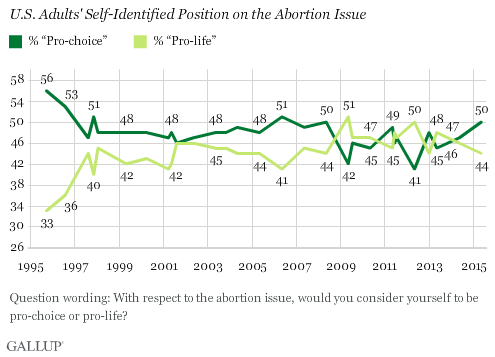This year Gallup released its annual poll on Americans’ views about abortion. With 50% labeling themselves “pro-choice” and 44% “pro-life,” the headline for the poll was “Americans Choose “Pro-Choice” for First Time in Seven Years.” However, a deeper look at the numbers reveals a more important truth about Americans’ views.

While Americans are willing to barely identify as pro-choice, they reject the views of the pro-choice movement. The pro-choice movement unashamedly supports abortion up to and at the moment of birth and agressively resists any restriction. These views, as we have written on this blog recently, put America out of step with most of the world.
However, the policies promoted and defended by the pro-choice movement are not what most Americans support.

Only 29% of Americans support the position that pro-choice leaders so desperately defend — that abortion should be legal under any circumstances. The ongoing defense of a culture of abortion on demand is clearly out of line with what most Americans believe.
Right now there is a lot of discussion about the 22 week abortion ban. Congress just passed the Pain Capable Unborn Child Protection Act, and many states are debating similar legislation. According to this poll, this would receive the support of roughly 69% of Americans. That is overwhelming support. While it would leave abortion legal in most circumstances, it would ban the cruel practice of aborting babies able to feel pain and who are viable outside the womb.
If pro-lifers were willing to support it, a ban on all abortions except in cases of rape, incest, and the life of the mother could likely receive the support of as much as 54% of American adults (36% +19%).
Not surprisingly, Americans’ views are more complex than the one size fits all labels we prescribe. It is also not surprising that many of those who call saving babies’ lives an “extreme position,” are the ones out of touch with most Americans. It is time to let the people’s voices be heard and to pass legislation that protects life and reflects the majority cultural perspective.

